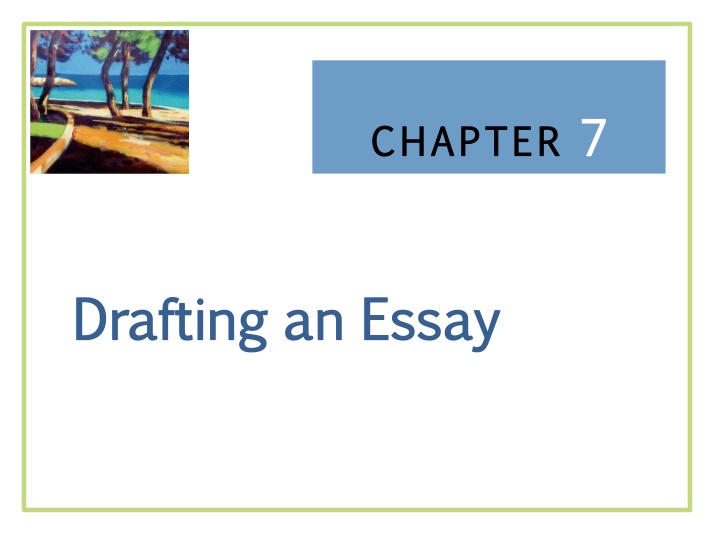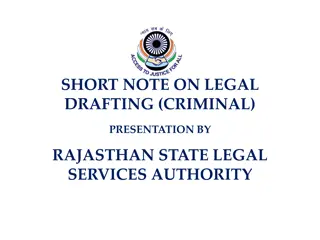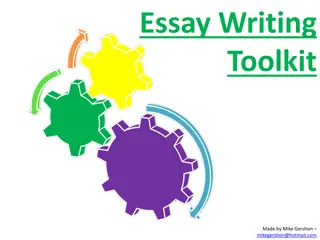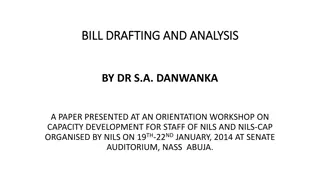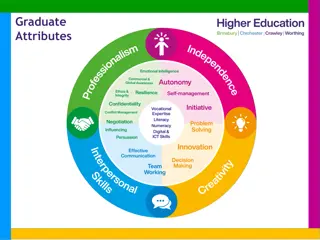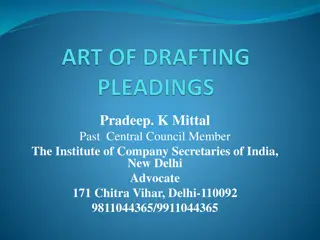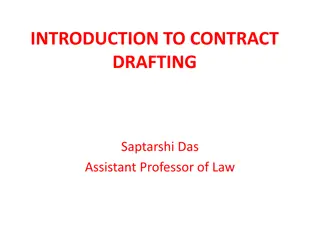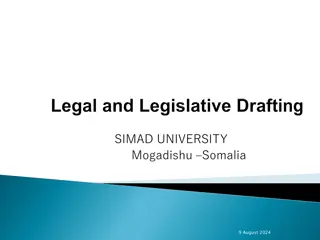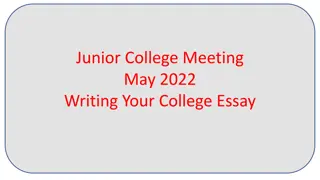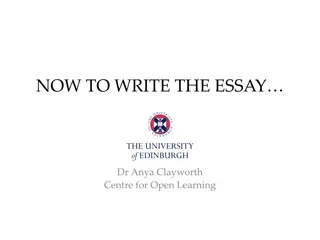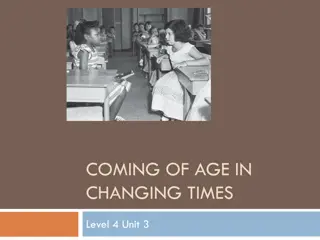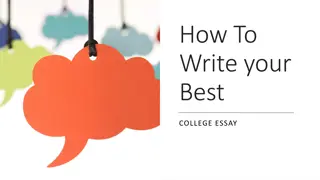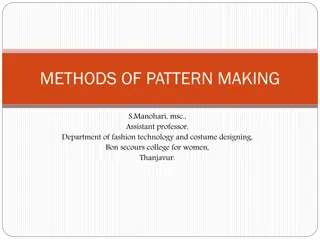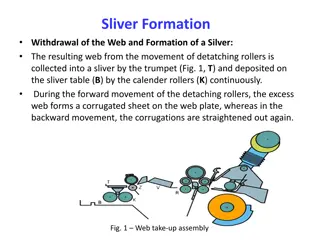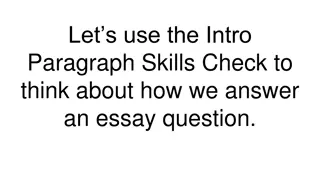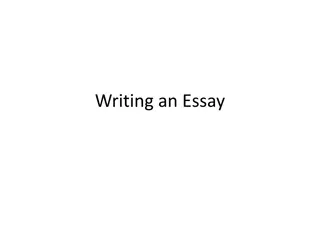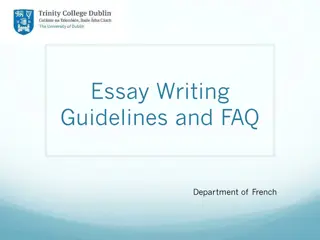Effective Essay Drafting Strategies
Crafting an essay involves structuring your thoughts, organizing supporting details, and writing a compelling introduction and conclusion. Learn about different methods of organization, outlining techniques, and tips for creating a strong introduction. Enhance your writing skills and engage your readers effectively.
Download Presentation

Please find below an Image/Link to download the presentation.
The content on the website is provided AS IS for your information and personal use only. It may not be sold, licensed, or shared on other websites without obtaining consent from the author.If you encounter any issues during the download, it is possible that the publisher has removed the file from their server.
You are allowed to download the files provided on this website for personal or commercial use, subject to the condition that they are used lawfully. All files are the property of their respective owners.
The content on the website is provided AS IS for your information and personal use only. It may not be sold, licensed, or shared on other websites without obtaining consent from the author.
E N D
Presentation Transcript
CHAPTER 7 7 CHAPTER Drafting an Essay Drafting an Essay
The Structure of an Essay The Structure of an Essay
Organizing Your Organizing Your Supporting Details Supporting Details Select a method of organization: Select a method of organization: Most-to-least or least-to-most important order Chronological (time) order Spatial order
Prepare an Outline or a Graphic Organizer Informal outline: : Use key words and phrases to list main points and subpoints
Formal outline: : Use key words and phrases to list main points and subpoints Graphic Organizer: : Sketch a visual outline of your essay using lines and brackets to show different elements and levels of importance
Writing Your Introduction, Writing Your Introduction, Conclusion, and Title Conclusion, and Title Writing a Strong Introduction An introduction should Establish your topic and your focus, approach, and point of view Set the tone of your essay Interest your reader Present your thesis statement
Suggestions for a Strong Introduction 1. Ask a provocative or disturbing question 2. Begin with a story or anecdote 3. Offer a quotation 4. Cite a little-known or shocking fact or statistic 5. State a commonly held misconception or a position that you oppose 6. Describe a hypothetical situation 7. Make a comparison to a familiar or interesting topic
Writing an Effective Conclusion A conclusion should Reiterate (without directly restating) the importance of the thesis Bring the essay to a satisfying close
Suggestions for a Strong Conclusion 1. Take your readers beyond the scope of your essay 2. Remind readers of the relevance of the issue. 3. Offer a recommendation or make a call to action. 4. Discuss broader implications. 5. Conclude with a fact, a quotation, an anecdote, or an example that emphasizes your thesis.
Writing a Good Title A title should Suggest your topic Spark readers interest Suggestions for a Good Title Write straightforward, descriptive titles for most academic essays. Ask a question that your essay answers. Use alliteration. Use a play on words or a catchy or humorous expression for less formal essays. Avoid broad, vague titles that sound like labels (such as Baseball Fans or Gun Control ).
